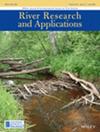将水文地质和人类利益纳入河流恢复项目的社会驱动力
IF 1.9
4区 环境科学与生态学
Q4 ENVIRONMENTAL SCIENCES
引用次数: 0
摘要
将水文地质(HGM)原则纳入退化河流的修复工作中,可以实现可持续的成果,并为人类带来各种益处。水文地质管理原则主要涉及在采取任何干预措施之前了解形成河道系统的背景和过程,以支持其动态发展,并与其潜在功能和用途保持一致。尽管最近的管理方法受到 HGM 原则的启发,但在魁北克(加拿大)开展的大多数恢复项目都不是以过程为基础的,而是以特定的单维目标为目标。虽然总体上缺乏项目后的监测,但一些项目似乎已经失败或成功与否参半。本研究旨在揭示河流恢复项目背后的社会驱动因素的多样性,并研究它们如何影响 HGM 原则与人类利益的结合。通过对四个修复项目的参与观察和对项目运营机构的访谈,对这些项目的特点进行了分析。此外,还对参与河流修复和管理的两个部委的代表进行了访谈。结果表明,这些项目主要是由公众的接受程度决定的,而忽视了全球治理原则,这可能会导致行动缺乏依据。项目资金和利益相关者的专业知识也对项目的实施提出了挑战,并在确定项目目标方面发挥了关键作用。这些因素的加入改进了当前确定河流恢复目标的分析框架。根据具体的社会文化、政治和立法背景,资金计划和利益相关者的专业知识既可能促进也可能限制将 HGM 原则和人类利益融入项目中。认识到这些关键驱动因素,就能将河流修复重新定义为一项基本的社会活动,并了解它们如何能推动创新方法取得更可持续的成果。本文章由计算机程序翻译,如有差异,请以英文原文为准。
Societal drivers for the integration of hydrogeomorphology and human benefits in river restoration projects
Integrating hydrogeomorphological (HGM) principles into the restoration of degraded rivers can achieve sustainable results and provide various human benefits. HGM principles mainly involve understanding the context and processes that shape a fluvial system before any intervention, in order to support its dynamism and to align with its potential functioning and uses. Despite recent management approaches inspired by HGM principles, most restoration projects carried out in Quebec (Canada) are not process‐based and target specific one‐dimensional objectives. Although there is an overall lack of post‐project monitoring, several projects appear to have failed or had mixed success. This research aims to shed light on the diversity of societal drivers behind river restoration projects and to examine how they influence the integration of HGM principles and human benefits. Four restoration projects were characterized through participant observation and interviews with the organizations running them. Representatives of two ministries involved in river restoration and management were also interviewed. The results show that projects were mainly shaped by public acceptance disregarding HGM principles, which can lead to poorly‐informed action. Project funding and stakeholders' expertise have also challenged project implementation and played a key role in defining their objectives. The addition of these components improve the current analytical frameworks for identifying river restoration objectives. Depending on specific sociocultural, political and legislative contexts, funding programs and stakeholders' expertise may either facilitate or restrict the integration of HGM principles and human benefits in the projects. Recognizing these key drivers reframes river restoration as a fundamentally social activity and enlightens how they could impel innovative approaches towards more sustainable results.
求助全文
通过发布文献求助,成功后即可免费获取论文全文。
去求助
来源期刊

River Research and Applications
环境科学-环境科学
CiteScore
4.60
自引率
9.10%
发文量
158
审稿时长
6 months
期刊介绍:
River Research and Applications , previously published as Regulated Rivers: Research and Management (1987-2001), is an international journal dedicated to the promotion of basic and applied scientific research on rivers. The journal publishes original scientific and technical papers on biological, ecological, geomorphological, hydrological, engineering and geographical aspects related to rivers in both the developed and developing world. Papers showing how basic studies and new science can be of use in applied problems associated with river management, regulation and restoration are encouraged as is interdisciplinary research concerned directly or indirectly with river management problems.
 求助内容:
求助内容: 应助结果提醒方式:
应助结果提醒方式:


